Look Out! Is This A Speedlight Killer? Flashpoint Xplor 100 Pro Review
This tiny strobe slides in a camera bag even easier than a hot shoe flash does.
As an on-site photographer, I’m an off-camera hot shoe flash kind of girl. I work without an assistant, so the ability to pull the flash off my camera after a wedding ceremony and onto a light stand for portraits has always appealed to me. But, at times — like when fumbling with four AA batteries — I’ve wondered if I was missing out by not lugging around a studio strobe. Enter the Flashpoint Xplor 100 Pro TTL pocket flash.
Just a little taller than a mug of coffee, the Xplor 100 Pro TTL is actually shorter than my Nikon SB-700 speed light. But, don’t let the size fool you. The flash can recycle as fast as 1.5 seconds and pop out 360 full-powered flashes on a single charge. So how much power can you pack into a strobe that’s smaller than a 70-200mm f2.8 lens? I tested the Xplor 100 Pro TTL on some portraits and product photography to find out.
Too Long, Didn’t Read.
The Flashpoint Xplor 100 Pro TTL is an excellent segue from off-camera flash to strobe. Compact and lightweight, the Xplor 100 is still powerful enough to overpower some outdoor light using high-speed sync. It’s a great strobe on a budget, though it lacks some of the power of pricier options.

Flashpoint Xplor 100 Pros and Cons
Pros
- Compact and lightweight
- High-Speed Sync, TTL, and manual modes
- Built-in wireless
- Rechargeable battery
- Affordable
- Plenty of available accessories
Cons
- A similarly priced Speedlight fired more during burst shooting
- Designed for 85mm lenses and under
Gear Used
I used the Flashpoint Xplor 100 Pro TTL Pocket flash with the Flashpoint R2 Pro Mark II transmitter. I started with an older budget light stand and shoot-through umbrella but upgraded to the Flashpoint 7’ Auto Stand and a transparent Godox 51-inch parabolic umbrella when said cheap light stand fell and broke the umbrella. I used a reflector for a clamshell lighting set-up in some head-and-shoulders photos but otherwise used only a single light (and some sunshine) for these photographs.
I shot the Xplor 100 Pro TTL with Nikon Z 6 II and the Nikon D850 bodies. I used 24-70mm f2.8 and 50mm f1.2 lenses.
Innovations
Most studio strobes are big and bulky. The Xplor 100 Pro TTL is barely larger than a can of pop and only weighs about a pound. Unlike big studio lights, it’s going to slip pretty easy right into a lens slot of a camera bag.
Flashpoint Xplor 100 Pro Tech Specs
These technical specifications are taken directly from Adorama:
- Energy Output: 100ws
- Flash Exposure Control: TTL for Canon, Nikon, Sony, Fujifilm, Panasonic, Olympus, and Pentax – Manual Flash
- Flash Lens Coverage: 28-85mm manual zoom control; Wider, with Round Head Accessory Kit
- R2 Radio Reception Range: >330ft / 100m
- R2 Radio Channels: 32
- R2 Groups: 5 (A/B/C/D/E)
- Triggering Modes: R2 Wireless Radio (built-in)
- Sync Port: Optical Slave S1, Intelligent Optical Slave S2
- Model Light: 1.8W SMD LED 1 to 10 levels
- Power Source: 7.2V/2600mAh Li-ion polymer battery 2.6Ah 18Wh
- Power Control: 1/256th power to full power in 1/3 and 1/10th stop increments
- Recycle Time: < 1.5 seconds
- Full power flashes per charge: Approx. 360
- High-Speed Sync: Up to 1/8000s
- Exposure Compensation (TTL): Via R2 transmitter
- Power Indication: Power operation. Off automatically after approx. 30 minutes of idle Operation
- Battery Indicator: Yes
- Color Temperature: 5800+200k
- Stroboscopic Flash: Provided (up to 90 times, 99Hz)
- Delay Flash: 0.0130 seconds
- Beeper: Yes
- Dimensions: 4.4 x 3.0 x 3.0 in / 12.0 x 7.6 x 7.6 cm
- Weight with battery: 18.5 oz / 524g
Ergonomics
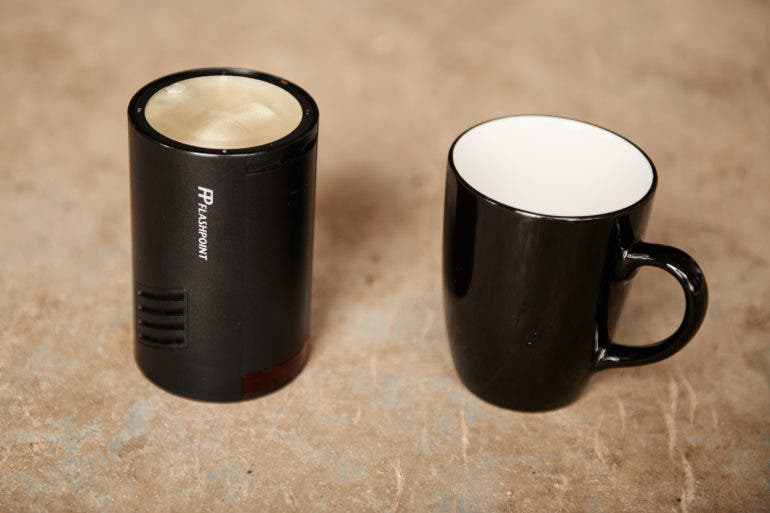
The Xplor is a cylindrical shape that easily slides into a lens slot of a camera bag. Speedlights tend to fit awkwardly folded in an L or unfolded flat, but this light is lens-shaped. Unlike some pricier strobes, there’s also no cone shape at the front or protrusions on the light. It takes up a 4.4-inch slot in my camera bag, which is less than my Nikkor AF-S 70-200mm f2.8 G lens. The Xplor 100 weighs a touch over a pound at 18.5 ounces.

The back of the light uses a small LCD screen. While the screen is small, it’s enough to display the mode, flash power, zoom, channel, and battery level. Besides the power button, the rear houses a mode, menu, modeling light, group/channel, zoom, and flash button. Next to the battery, a set dial cycles through the different channels and menu options. (You also have to rotate this dial when powering the light on.)
Slightly larger than the screen is the end of the battery pack. It pops out of the back of the light with a small switch on the side.

The front of the light is magnetic, so it’s compatible with a round head accessory kit. You can get both the light and a kit with gels, a snoot, grid, barn doors, diffuser, and a case for $355. Without the modifiers, the light sells for about $300 and still includes a great case with it. It’s compatible with the Glow S2 Bowens Mount Bracket, so there are many additional modifiers that are compatible. That’s an important distinction since the quality of light relies more heavily on the modifier used than the light itself.
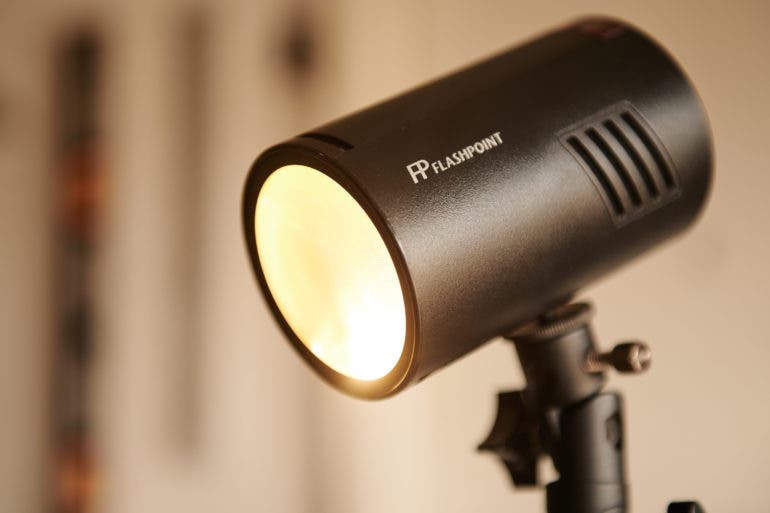
The bottom houses two different screw mounts, so you can choose where to mount the light. A fan also vents out the bottom to prevent overheating.

Wireless is built into the monolight itself. You’ll need a transmitter, but the light doesn’t need a receiver.
Build Quality
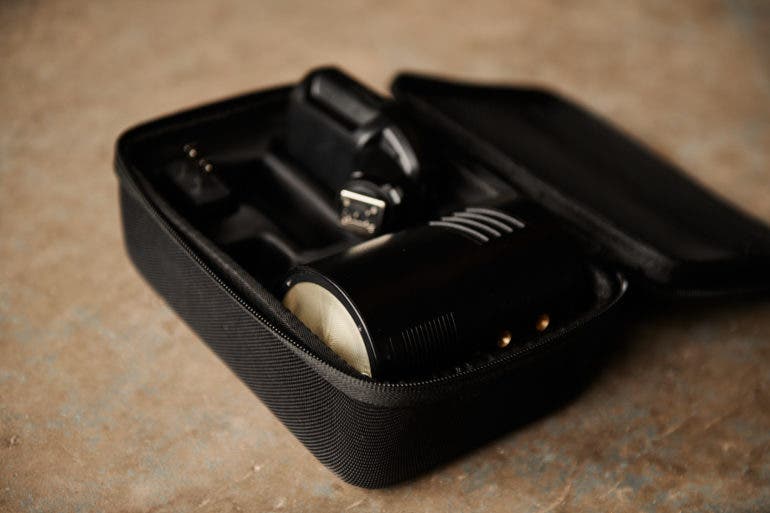
The Xplor 100 Pro’s body is constructed with plastic. In my hands, the light feels similar in build quality to a budget lens. The long cylindrical shape has fewer pieces to break than a Speedlight. The light survived when my umbrella became a wind sail and toppled the whole thing over, though the now busted umbrella took the brunt of the fall. It’s not weather-sealed, but few flashes are.
Ease of Use

While I’ve used off-camera speed lights before, I needed to do some exploring a bit of Googling to figure the ins and outs of the Xplor 100 Pro with the R2 II transmitter. Pushing the Gr/Ch button switches the group, pressing and holding the button activates the channels, which you can navigate using the dial. The menu uses abbreviations to fit on the smaller screen, so the menu isn’t as self-explanatory as I would have liked either. But, after a tutorial or two, I was up and shooting with this light and trigger.
The R2 Pro Mark II allows you to adjust the light’s settings from the trigger without walking over to the flash. You can adjust five different groups individually from the transmitter, activate high-speed sync, adjust the zoom, set the manual flash power, switch to TTL mode, and more. The only thing I really needed to do from the light itself was to set the correct channel and group and, if desired, turn the modeling light on and off. I should note that the trigger would only allow me to go to 1/128th power, not the 1/256th power that the flash is capable of.
The modeling light, of course, is a big help for beginners and something that you don’t find on a Speedlight. Modeling lights are never as powerful as the strobe itself. You won’t be able to use the modeling light outdoors because it’s not strong enough to actually see the effect. But, the modeling light can give you a good idea of where your shadows are going to fall indoors.
You should be at least familiar with on-camera flash before jumping into the Xplor 100 Pro. Beginners will need to look at a few tutorials and spend some time experimenting with the light. But, I feel the small light is an easier introduction to strobes than the larger, more daunting lights.
Performance: How does the Xplor 100 Pro compare to a Speedlight?

With the Xplor 100 Pro being as compact as my speed light, I wanted to compare how powerful the little strobe is compared to my SB-700, Nikon’s mid-level flash that currently sells for a price close to the Xplor 100 Pro kit with accessories. At 1/128 power, both the strobe and the flash hit every one of the D850’s 7 fps burst speed. However, at full power, The Xplor 100 fired about every ten shots, where my hotshot flash only had about seven unlit photos between firing.
The Xplor 100 Pro is also rated to 85mm, where my Speedlight is 105mm — which, of course, varies based on the exact Speedlight you choose. You’ll get some of the frame uncovered by the XPLOR 100 with a 105mm lens for portraits. Of course, you can move the light closer to the subject in some cases, which will also create a softer light. The wireless is rated to a range under 330 feet.
With High-Speed Sync (HSS), the Xplor 100 Pro could overpower the sun on full power to create a black background. I could use that HSS to crank up the shutter speed on my D850. (In flash photography, shutter speed determines how much ambient light is let in, which a fast shutter letting in little). I took both of these photos on the same (cloudy) day outdoors:
That makes for a pretty versatile little light.
The battery life on the Xplor 100 is also excellent. It’s rated to 360 full-power flashes. I used the Xplor 100 on three 30 minute or less portrait shoots, a 45-minute product shoot, and three shorter product shoots, and it still only shows that half the battery is gone. 95 percent of those were at reduced power, which is typically true of most portrait photography sessions.
Image Quality
The quality of light you get from any source will be determined more by the modifier you use than the light itself. I was thrilled with how the photos turned out using this light with an umbrella. The light didn’t create any odd colors. Looking at the photos, I would never guess that they were shot with a budget-friendly strobe and not one that cost twice as much.


I was able to overpower ambient light on a cloudy day to make photos appear as if they were shot in a studio on a black background. I could also turn the light down low enough that the untrained eye doesn’t even realize as flash is there, like with the golden hour photos below.
Extra Image Samples
From day one, the Phoblographer has been huge on transparency with our audience. Nothing from this review is sponsored. Further, lots of folks will post reviews and show lots of editing in the photos. The problem then becomes that anyone and everyone can do the same thing. You’re not showing what the lens can do. So we have a whole section in our Extra Image Samples area to show off edited and unedited photos. From this, you can make a decision for yourself.
JPEGs






Edited RAW





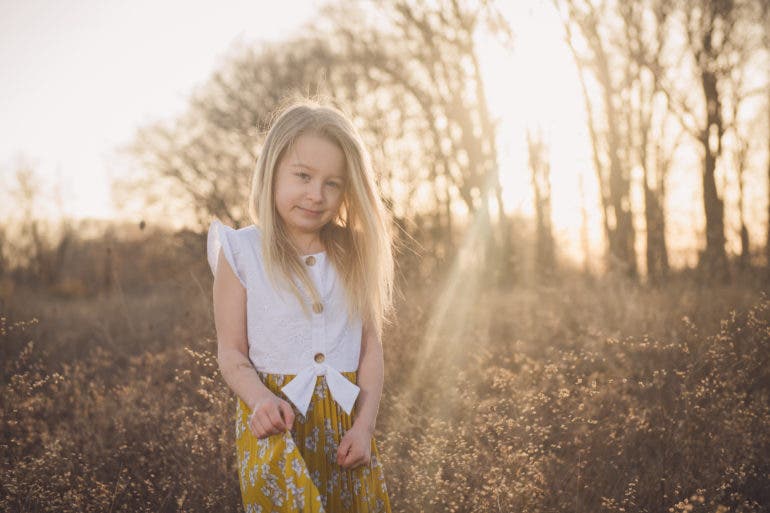






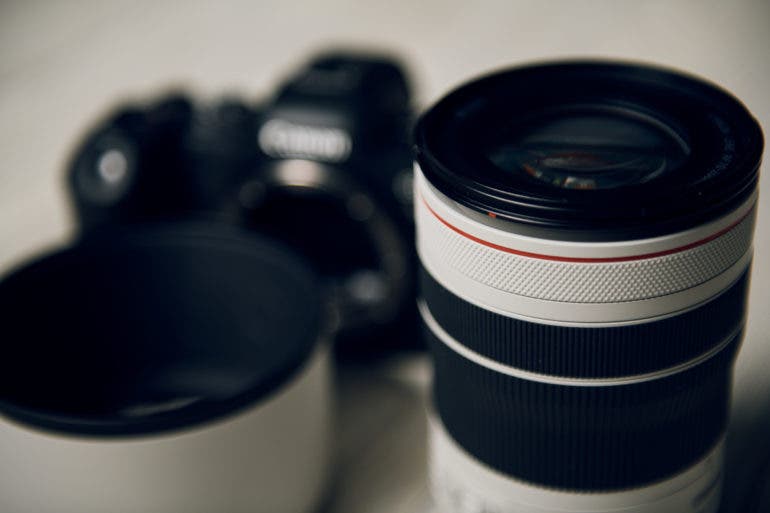
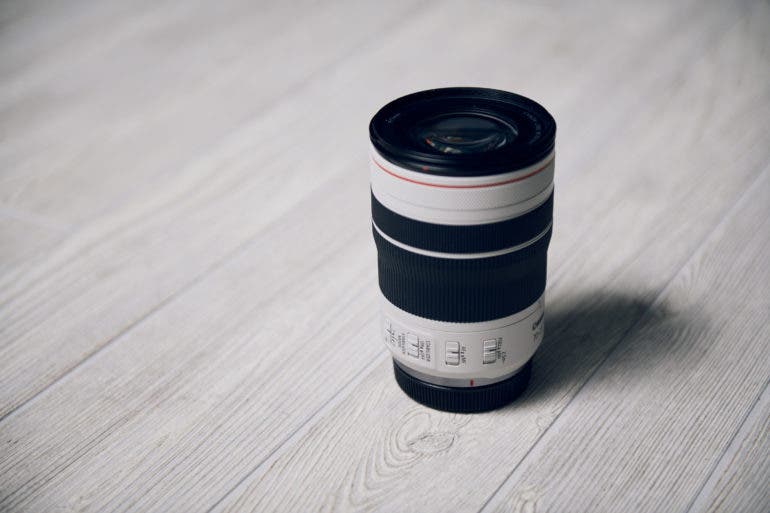
Conclusions
Likes
- This light created some great images. People aren’t going to look at these photos and think that you used a cheap light.
- I love how easy this is to slip in a camera bag without the odd gaps like with a hot shoe flash.
- High-speed sync can overpower the ambient light on a cloudy day for black backgrounds.
- The wireless is built-in, so there’s no need to mess with a receiver.
- The battery is rechargeable and lasted a long time.
- It’s well-priced.
- The light can be used with a Bowens mount or magnetic accessories.
Dislikes
- I got more flashes in burst mode with my off-camera speed light, but only by a little.
- The light is made for pairing with 28mm to 85mm lenses, a downside for portrait photographers working with a 105mm.
I’ve saved the best for last — the Flashpoint Xplor 100 Pro sells for $299, or $355 with the round head accessory kit, which includes gels, diffusers, a snoot, grid, barn doors, an umbrella bracket, and a case to put it all in. That’s closer to the price of a Speedlight than a battery-powered strobe. Considering photographers tend to pay more for more portable gear, the mix of affordability and portability is excellent.
The Flashpoint Xplor 100 Pro is an excellent strobe for on-site photographers, particularly for portraits, weddings, and product photography. The size is as easy to bring along as a lens, and the rechargeable battery lasts long. Compatibility with Bowens brackets also means there’s plenty of ways to get great-shaped light. While beginners will need to spend some time in tutorials and playing with the different options, the price also makes the light accessible to photographers new to strobes.
The downside? The Xplor 100 was slightly slower in bursts than my SB-700 off-camera. The light is also limited to lenses under 85mm, where the larger lights from the Xplor series, such as the Xplor 600 Pro, have a longer reach and more power.
These are small issues, except for the slower burst performance. As a portrait photographer, I rarely needed to shoot with the Xplor 100 at full power. I preferred the portable size and affordable price over the extra power that I would rarely take advantage of. However, my speed light would still be the better choice for an off-camera light on the dance floor at a wedding reception because of a shorter delay in burst shooting.
I’m giving the Flashpoint Xplor 100 Pro TTL five out of five stars. Want one? Pick one up from Amazon.



